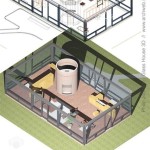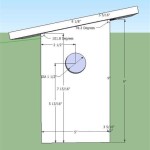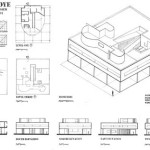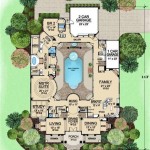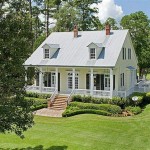Victorian Era House Plans: A Legacy of Architectural Grandeur
The Victorian era, spanning from the 1830s to the early 1900s, witnessed a remarkable transformation in architectural styles and house plans. Victorian houses, with their intricate ornamentation, varied rooflines, and spacious interiors, continue to captivate homeowners and architects alike. Let's explore the distinctive characteristics of Victorian era house plans and their enduring legacy.1. Eclecticism and Revivalism:
Victorian architecture drew inspiration from various historical and cultural influences, resulting in an eclectic mix of styles. Gothic Revival, Italianate, Second Empire, and Queen Anne were among the most prominent styles that shaped Victorian house plans. These styles were often combined to create unique and visually striking designs.2. Ornate Details and Elaborate Trim:
Victorian houses are renowned for their elaborate ornamentation and decorative elements. Intricate woodwork, such as gingerbread trim, fretwork, and turned spindles, adorned porches, eaves, and gables. Stained glass windows, decorative moldings, and elaborate hardware added to the visual appeal of these homes.3. Asymmetrical Facades and Varied Rooflines:
Victorian houses often featured asymmetrical facades, with projecting bays, porches, and towers creating a dynamic and visually interesting composition. Complex rooflines, characterized by steeply pitched gables, dormer windows, and intricate rooflines, added to the overall grandeur of these homes.4. Spacious Interiors and Functional Layouts:
Victorian houses were designed to accommodate large families and social gatherings. Spacious rooms, high ceilings, and grand staircases were common features. The floor plans were typically well-defined, with separate spaces for formal and informal living, dining, and sleeping areas.5. Technological Advancements:
The Victorian era witnessed significant technological advancements, which influenced house design and construction. Central heating systems, indoor plumbing, and gas lighting were gradually introduced, improving comfort and convenience within Victorian homes.6. The Enduring Legacy:
Victorian houses continue to be highly sought-after and prized for their architectural charm and historical significance. Many Victorian homes have been meticulously restored and preserved, showcasing the craftsmanship and artistry of the era. These homes often serve as landmarks and cultural heritage sites, adding character and charm to neighborhoods and cities. In conclusion, Victorian era house plans epitomize an era of architectural extravagance and innovation. With their eclectic styles, intricate details, and functional layouts, Victorian houses continue to inspire and captivate homeowners and architects alike. Their enduring legacy lies in their ability to blend historical charm with modern functionality, creating timeless and elegant homes that stand the test of time.
Vintage House Plan Homes And 28 Victorian Plans From Palliser S Model Mansion Floor

1905 Glen Flora Queen Anne Style Plan By Hodgson Victorian House Plans Vintage Floor

Victorian House Plans Decorative Painted Lady Home

Untitled Victorian House Plans Mansion Floor Plan Homes

29 Victorian House Plans E Book Vintage

Pin By Chriss Flagg On Architecture Victorian House Plans Mansion Floor Plan

1879 Print Victorian House Architectural Design Floor Plans Homes Mansion Plan

Victorian House Plans And Small Cottage Designs

Victorian House Plans Floor The Designers

Victorian House Plans Floor Designs Houseplans Com

